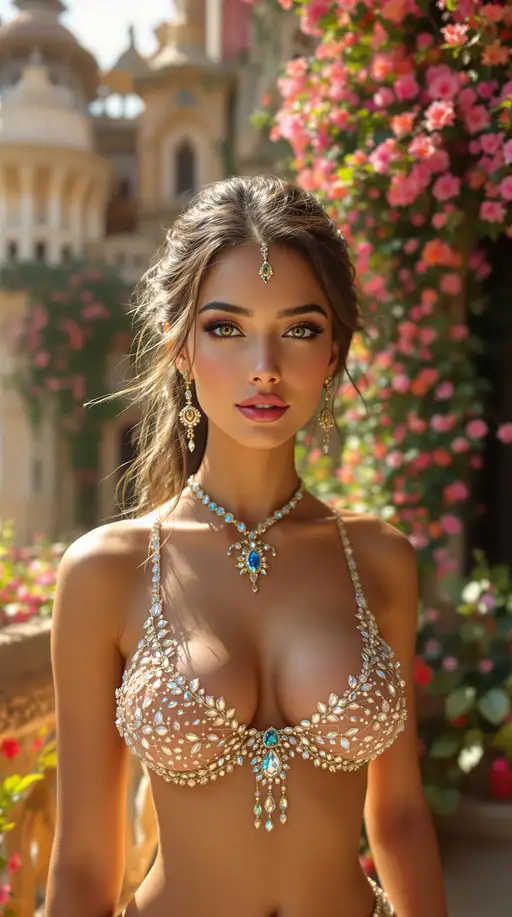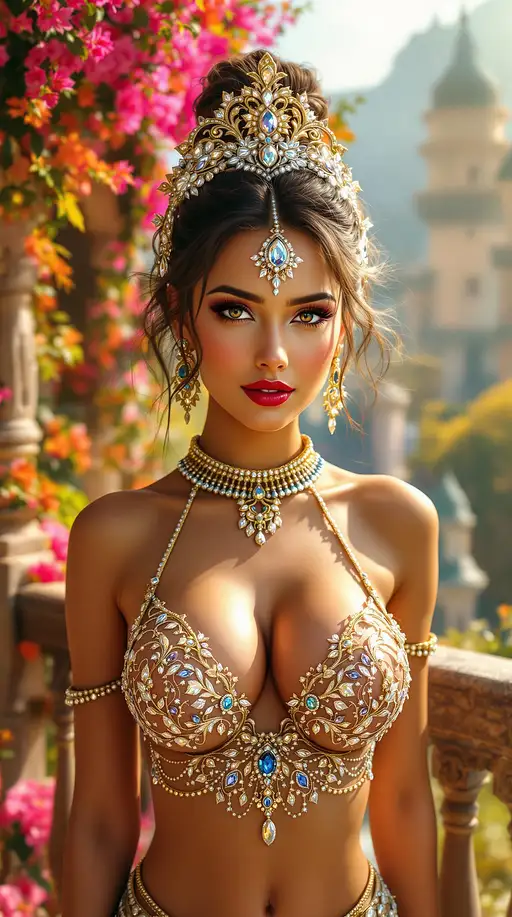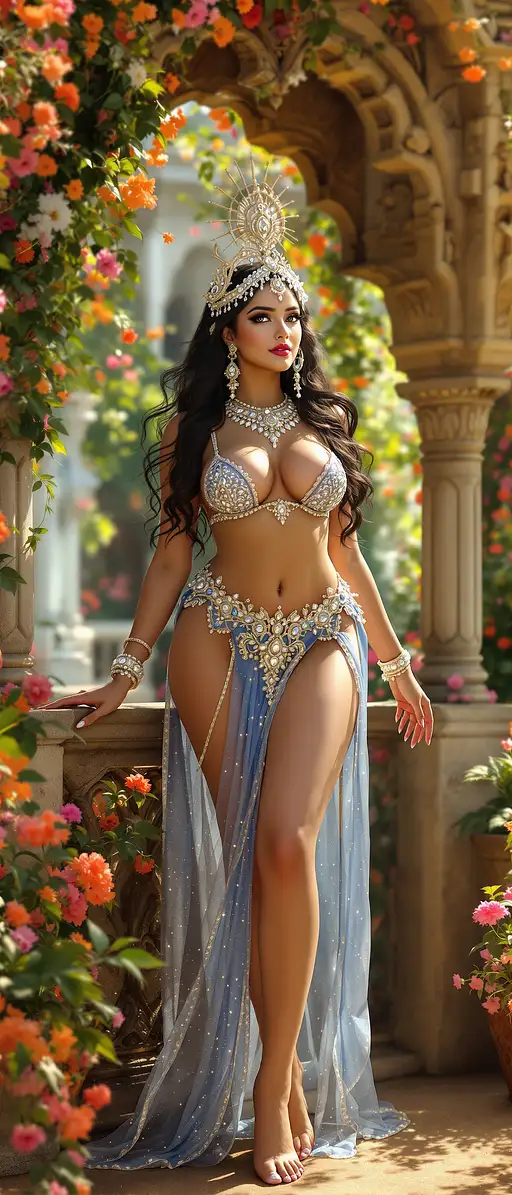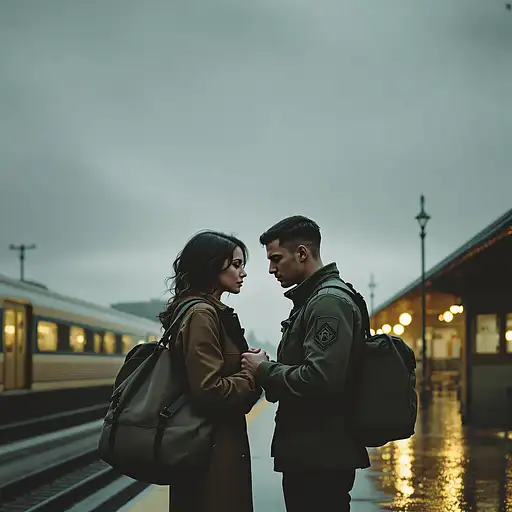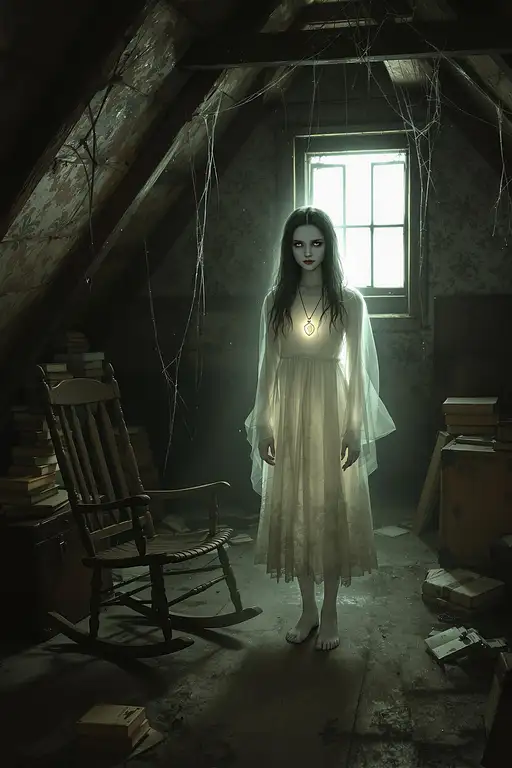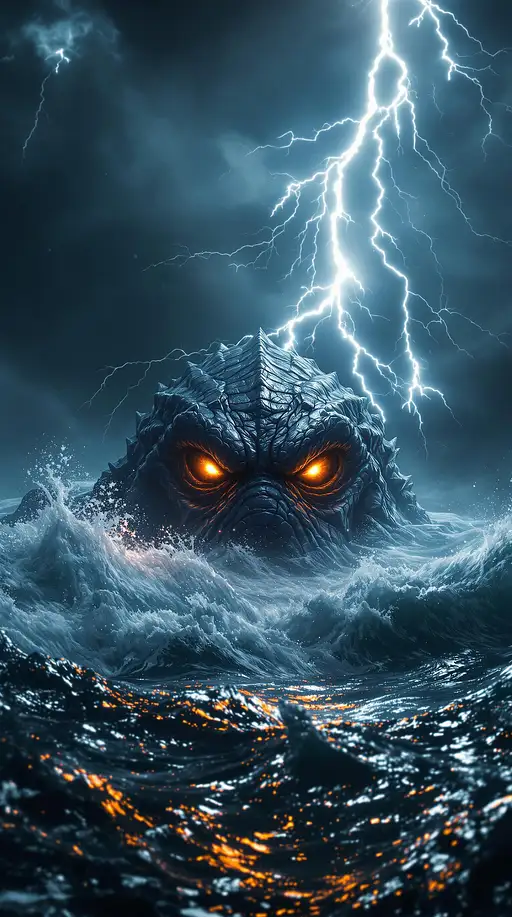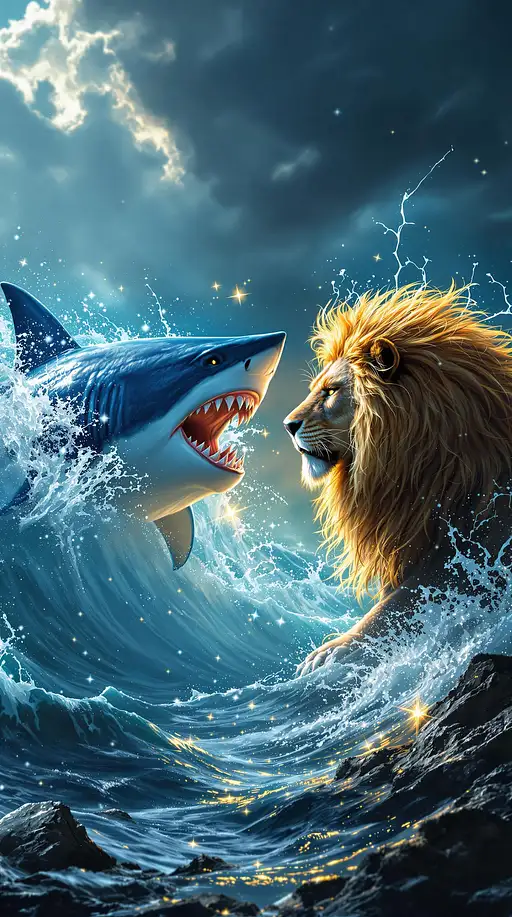9 months ago
Setting: The attic is dimly lit, with only faint beams of pale, dusty light filtering through a cracked, grime-covered window. The air appears heavy with years of neglect, and motes of dust hang suspended, glowing faintly in the shafts of light. The room is cluttered with forgotten relics: a toppled rocking chair, a tattered trunk with its lid slightly ajar, and stacks of yellowed books leaning precariously against one another. Cobwebs stretch between the wooden beams overhead, their delicate threads shimmering faintly in the light. The walls are lined with faded, peeling wallpaper, its once-vibrant floral pattern now almost indistinguishable under the layers of dust and decay.
Atmosphere: The air in the room seems almost tangible, thick with an eerie stillness. The photograph captures a moment where time itself feels frozen, as though the attic holds its breath in the presence of something otherworldly.
The Ghostly Visage: Standing in the far corner of the room, partially obscured by shadows, is the spectral form of a young girl, her presence both ethereal and unsettling. Her translucent figure seems to shimmer faintly, as if caught between this world and the next. Her face, pale and mournful, is framed by long, dark hair that hangs in limp strands, blending with the gloom. Her eyes are hollow yet piercing, as though staring directly through the camera, conveying an unbearable sadness or silent plea.
She wears a simple, tattered white dress, its fabric frayed at the edges and stained with the passage of time. The faintest outline of bare feet is visible, hovering just above the dusty wooden floorboards. Around her neck is a delicate locket, faintly glowing with an unnatural silvery light, seemingly the only object in the room untouched by decay.
Details of the Scene: The photograph captures her form partially blurred, as if her presence disrupts the reality around her. The edges of her figure fade into the background, making it difficult to discern where the ghost ends and the room begins. In the faint reflection on the dusty windowpane, her outline appears sharper, creating an unnerving sense of duality.
Mood: The image evokes a profound mix of melancholy and unease. While the ghostly girl is not overtly menacing, her silent presence fills the room with an overwhelming sense of tragedy, as though she is forever bound to this forgotten attic, a prisoner of its memories. The photograph captures the essence of a haunting, where sorrow and mystery linger in every shadow.


